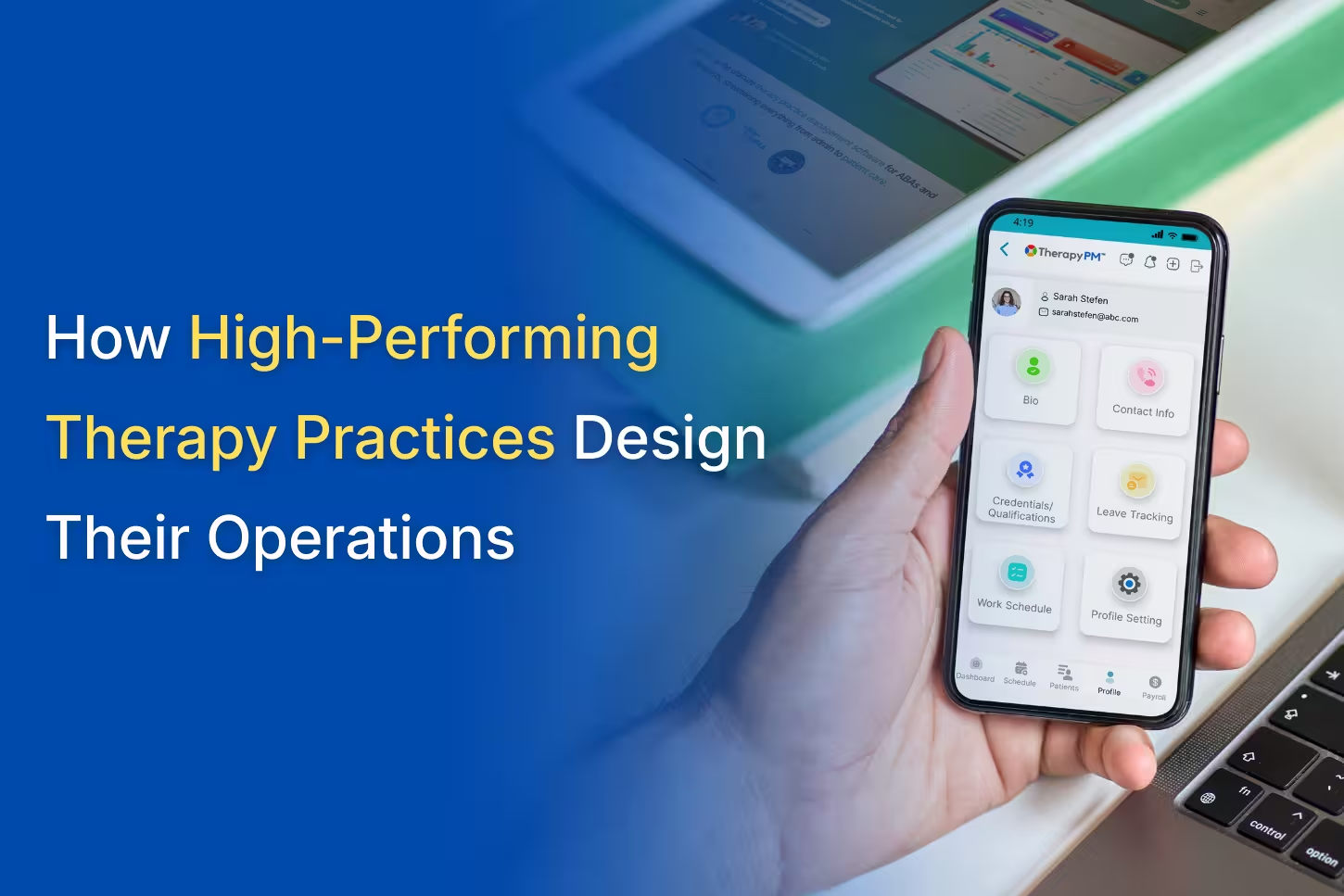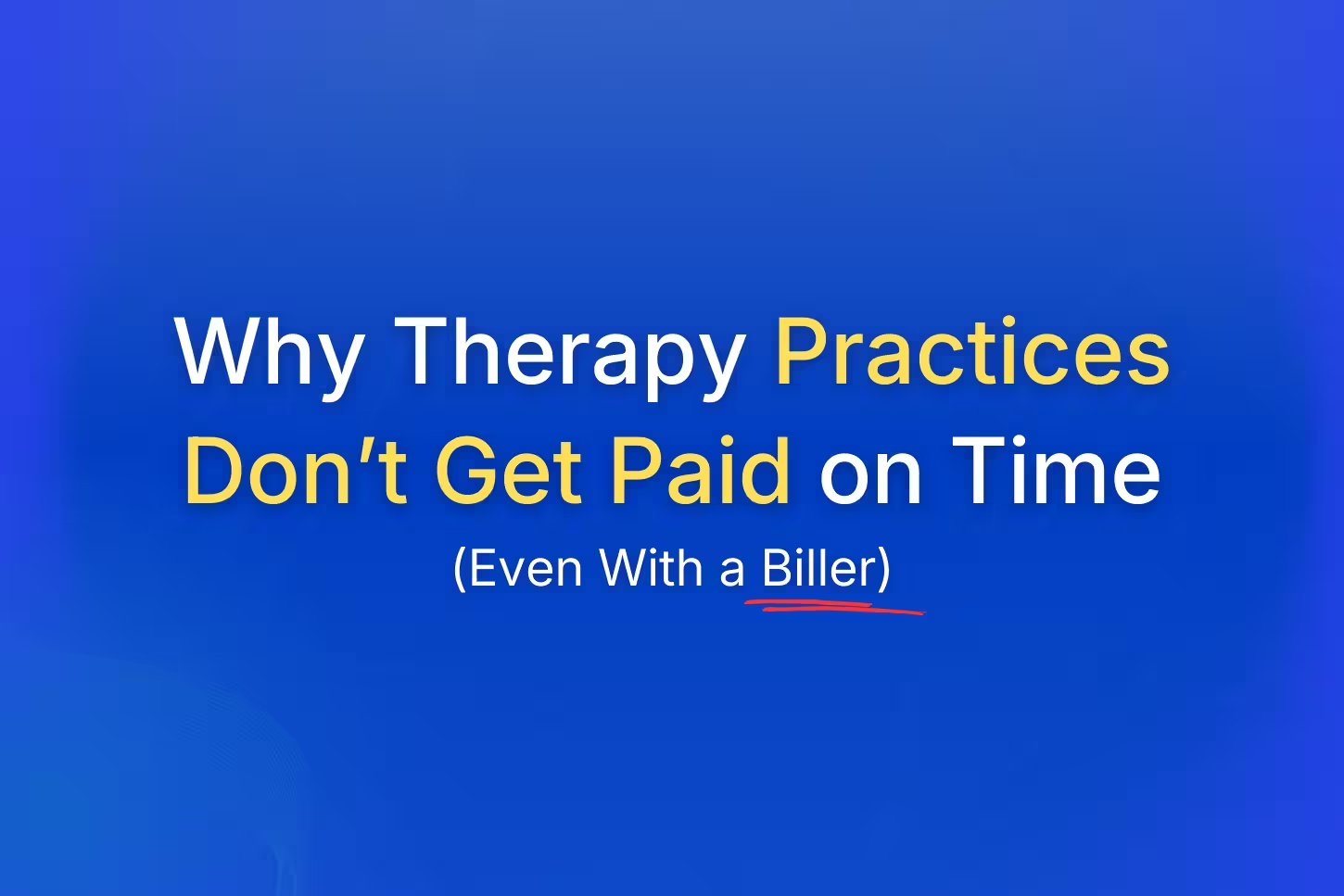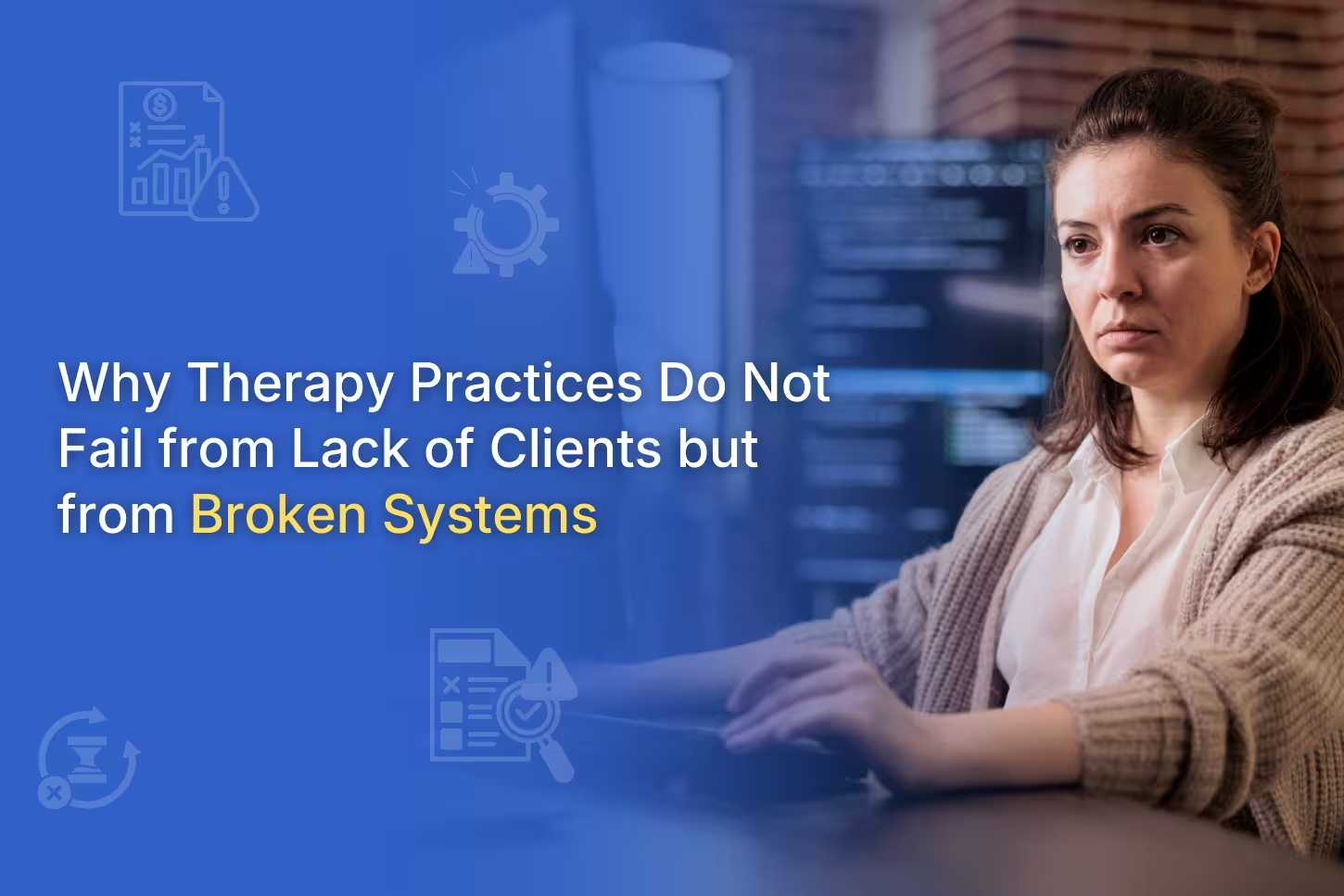
New CPT Codes for Remote Therapeutic Monitoring (RTM) in Pediatric Therapy (2025)
Remote Therapeutic Monitoring (RTM) is transforming the way pediatric therapy is delivered by enabling therapists to extend care beyond the clinic walls. With the increasing demand for flexible and accessible treatment options, RTM allows providers to monitor patient progress in real-time using FDA-approved digital tools—improving engagement, adherence, and outcomes for children.
Whether it’s tracking musculoskeletal progress or behavioral responses to therapy, Remote Therapeutic Monitoring empowers clinicians to adjust care plans proactively, ensuring each child receives consistent, personalized support. In this blog, we’ll explore how the latest RTM CPT codes 2025 enhance pediatric therapy, who can bill for them, and how practices can implement RTM effectively for better clinical and financial results.
Initially introduced in 2022, CPT codes 98977 and 98978 have been refined in 2025 with updated guidance from CMS and AMA. These Remote Therapeutic Monitoring CPT codes can be particularly useful in pediatric therapy as they focus on musculoskeletal and cognitive behavioral therapy (CBT).
This blog aims to inform pediatric therapists about new updates, who can do pediatric RTM billing, and how to bill RTM CPT codes 2025.
Key Takeaways
- New RTM CPT Codes 98977 & 98978 allow pediatric therapists to remotely monitor musculoskeletal and CBT progress with FDA-approved devices.
- Therapists eligible to bill include physical therapists (PTs), occupational therapists (OTs), speech-language pathologists (SLPs), and behavioral health providers.
- Billing requires 16+ days of device data collection in 30 days to qualify for reimbursement under 98977/98978.
- Reimbursement rates based on CMS averages include:
- 98977/98978: Approximately $43/month
- 98980 (first 20 minutes of review): Approximately $50
- 98981 (each additional 20 minutes): Approximately $40.
- RTM tracks subjective, therapy-related data (e.g., pain, adherence), while RPM focuses on physiological metrics (e.g., heart rate).
- Caregiver engagement is essential in pediatric RTM success as they assist with device use, routine adherence, and communication with therapists.
- Document consent forms and align them with treatment plans, data logs, and time-tracked management records for compliance.
- Common challenges include payer variability, concurrent billing restrictions, and child-device engagement, which requires caregiver education, smart tech, and proactive planning.
- TherapyPM and similar platforms streamline RTM implementation by integrating code updates, tracking data thresholds, and automating billing workflows.
- Adopting RTM helps pediatric practices enhance patient outcomes, reduce in-person care gaps, and get reimbursed for remote clinical work.
What are RTM CPT Codes 98977 & 98978?
Remote Therapeutic Monitoring (RTM) is a category of CPT codes that enable healthcare providers to monitor patients’ therapeutic data remotely with connected medical devices. This is particularly useful for pediatric therapy, where consistent progress tracking and family engagement are vital for care outcomes.
RTM vs RPM Codes – What’s the Difference?
Pediatric therapists tend to confuse RTM with RPM (Remote Physiologic Monitoring), which is often used in medical settings. Here are a few key pointers on how RTM vs RPM codes are different:
Aspect | Remote Therapeutic Monitoring (RTM) | Remote Physiological Monitoring (RPM) |
Data Type | Subjective Examples: Therapy adherence, pain levels | Objective Examples: Heart rate, oxygen saturation |
Device Use | Therapeutic Examples: Movement trackers, CBT apps | PhysiologicExamples: Blood pressure cuffs, pulse oximeters |
Eligible Providers | Therapists (PT, OT, SLP)Non-physician practitioners | Physicians Qualified healthcare professionals |
Use Cases | MusculoskeletalRespiratoryCBTTherapy adherence | Chronic disease monitoring Examples: Hypertension, diabetes. |
RTM is ideal for pediatric therapy because it records behavioral and functional data based on therapy outcomes, such as:
- Mobility
- Home exercise adherence
- Screen-based CBT tasks.
Overview of the New RTM Codes
As proposed by the CMS, pediatric therapists can utilize two new RTM codes 2025:
CPT Code 98977
- Purpose: Used by RTM devices to monitor musculoskeletal system status. Examples include:
- Posture sensors
- Joint movement trackers.
- Requirements:
- The device must be FDA-defined.
- Data must be collected for at least 16 days in 30 days.
- Billing Frequency: Once every 30 days per patient.
CPT Code 98978
- Purpose: Used by RTM devices focusing on cognitive behavioral therapy (CBT), particularly for pediatric therapy.
- Requirements:
- Use of an FDA-defined digital CBT tool. Examples include:
- Therapy games
- Tracking apps
- Data collected and transmitted over at least 16 days/month.
- Billing Frequency: Monthly, assuming adherence thresholds are met.
Timeline Announcement
The inclusion of Remote Therapeutic Monitoring CPT codes 98977 and 98978 signifies how pediatric therapy is delivered remotely. These codes were introduced as part of the 2025 CPT code set, published officially by the American Medical Association (AMA).
The new RTM codes 2025 were introduced along with the latest updates to the Medicare Physician Fee Schedule, going into effect on January 1, 2022. Further, these codes were clarified and revised in 2025.
A Comprehensive Timeline of RTM Codes Up to 2025:
January 1, 2022:
The Centers for Medicare & Medicaid Services (CMS) implemented Remote Therapeutic Monitoring CPT codes initially, including 98977 and 98978.
2022-2024:
Ongoing updates and clarifications to RTM billing policies, including the frequency and duration of billing for these codes.
September 2024:
The CPT Editorial Panel of the AMA reviewed and revised the existing RTM codes. (Changes expected to be implemented on January 1, 2026, according to APTA.)
2025:
Further updates and clarifications to RTM billing guidance are expected in the 2025 Medicare Physician Fee Schedule.
Billing for CPT 98977 Pediatric Therapy & CPT 98978 Remote Therapeutic Monitoring with Reimbursement Details
The new Remote Therapeutic Monitoring CPT codes 98977 and 98978 are designed to support non-physician providers in pediatric therapy. Unlike RPM (Remote Physiologic Monitoring) which is limited to physicians and certain practitioners, RTM has a broader scope. This makes it accessible to a wider group of licensed professionals.
Who are the Eligible Therapy Providers?
- Physical Therapists (PT)
- Occupational Therapists (OT)
- Speech-Language Pathologists (SLPs)
- Clinical Social Workers
- Behavioural Health Providers (for CBT-based programs)
The RTM CPT codes 2025 enable pediatric therapists to monitor a child’s adherence and response to therapy-related interventions remotely. They can especially use the codes for musculoskeletal and cognitive behavioral domains.
Reimbursement Estimates for RTM Codes 98977 & 98978:
Reimbursement estimates often vary for CPT codes, and RTM codes 2025 are no exception. According to the 2022 Medicare Physician Fee Schedule (2022 MPFS), five new CPT codes were released on November 2, 2021. Understanding the financial value of these new RTM codes is key to optimizing your pediatric therapy practice:
- CPT 98977:
Reimburses for the monthly supply of an RTM device used for monitoring musculoskeletal system status, for instance, postural alignment, and motor activity.
| Approximate Reimbursement: $43/month per patient |
- CPT 98978:
This applies to monitoring devices used in Cognitive Behavioural Therapy (CBT) programs, tracking patient adherence and symptom progression.
| Approximate Reimbursement: $43/month per patient |
- CPT 98980:
Covers the initial 20 minutes per month of therapist time spent reviewing RTM data and interacting with the caregiver/patient.
| Estimated Rate: $50 |
- CPT 98981:
Covers each additional 20 minutes of RTM-related care management in the same calendar month.
| Estimated Rate: $40 |
Note: These figures are based on CMS national averages. Actual reimbursement rates may vary by state, payer policy, and provider credentials.
How It Works – Billing Workflow?
Remote Therapeutic Monitoring (RTM) billing is structured across three key phases. Each CPT code represents a specific function in the care cycle. Given below is the simplified breakdown of how RTM billing works in pediatric therapy:
Setup & Patient Onboarding (CPT 98975)
| What It Covers | Initial setup of the RTM device, patient education, and onboarding. |
| When to Bill | Once per episode of care (per 30-day period). |
| Ideal Use | At the beginning of a pediatric RTM care plan. |
Device Monitoring (CPT 98977/98978)
| What It Covers | Monthly billing for remote transmission of data via the device. |
| Requirement | Data must be collected and transmitted over 16+ days. |
| When to Use | 98977: For musculoskeletal system monitoring98978: For CBT-related digital therapeutic monitoring. |
Care Management (CPT 98980/98981)
What It Covers | Therapist or clinician time spent reviewing RTM data, modifying care plans, and communicating with the patient/caregiver. |
Time Thresholds | 98980: First 20 minutes in a calendar month98981: Each additional 20 minutes |
Interaction Format | Phone/telehealth check-insCaregiver consultations Portal-based communication |
Pediatric-Specific Considerations
Remote Therapeutic Monitoring (RTM) in pediatric therapy consists of unique dynamics that differ from adult care. Although the core pediatric RTM billing codes remain the same, successful implementation depends on caregiver involvement, home environment, and age-appropriate engagement strategies.
- Home Adherence Starts with Routine
RTM CPT codes (98977 for musculoskeletal and 98978 for cognitive behavioral interventions) require at least 16 days of device data transmission in 30 days. For pediatric patients, the consistency depends largely on the family’s daily routine and follow-through.
- Young children aren’t responsible for independent device usage; therefore, parents and caregivers must ensure compliance.
- Encourage families to:
- Incorporate RTM usage into daily therapy routines
- Set alarms/reminders for device usage
- Use reward charts/visual cues for motivation.
- Caregiver Engagement is Not Optional, rather, it is Essential
Since most pediatric patients cannot manage RTM independently, Caregiver participation is critical to the success of pediatric RTM and essential for meeting billing requirements.
- During initial setup (98975), train caregivers on:
- Device handling
- Troubleshooting issues
- Interpreting progress reports
- Document caregiver interactions and education as part of your time-tracking for management codes (98980/81).
- Make RTM Child-Friendly
Vendors like Augment Therapy and Imagum Health offer RTM solutions specifically designed for pediatric therapy. Their platforms feature:
- Interactive movement tracking
- Animated guides for exercise routines
- Interactive CBT modules that engage children through play
- Real-time feedback for both therapists and caregivers.
These tools not only boost adherence but also support billable data collection via seamless integration with RTM requirements.
Coding & Documentation Best Practices
Proper coding and documentation are essential for accurate reimbursement and compliance, especially in the case of pediatric RTM billing services. Here’s what therapists should keep in mind:
- Use FDA-Approved Devices
Ensure the RTM device used, for instance, musculoskeletal or CBT monitoring, is FDA-cleared and intended for therapeutic use, not just wellness tracking. This is essential for CMS and private payer approval.
- Obtain Informed Consent
Before initiating RTM, providers must obtain documented patient/guardian consent, especially in pediatric cases. Consent must include:
- Purpose of monitoring
- Data collected and how it is used
- Duration and frequency of monitoring
- Right to withdraw consent at any time.
- Align with the Plan of Care
RTM must support a documented treatment plan. Providers must ensure the therapy goals, interventions, and monitoring objectives align with the child’s individualized care plan. This is highly essential for children with special needs or IEPs (Individualized Education Programs).
- Meet Data Collection Requirements
For CPT 98977 pediatric therapy and CPT 98978 remote therapeutic monitoring:
- At least 16 days of data must be collected within a 30-day period for pediatric RTM billing eligibility.
- The data must reflect adherence, progress, or response to therapy.
- Document Clinical Interaction & Time
To bill Remote Therapeutic Monitoring codes 98980 or 98981, document:
- Who performed the RTM management (licensed clinician)
- What was reviewed (data trends, adherence, caregiver reports)
- Time spent (e.g., 20+ minutes)
- Clinical action taken (e.g., plan modifications, caregiver guidance)
- Watch for Concurrent Billing Limits
Some payers do not allow RTM and RPM to be billed together, or limit overlaps with telehealth codes. Review payer-specific rules carefully before submitting claims.
Tips for Implementation
Implementing RTM successfully into pediatric therapy practice goes beyond just using new codes. It requires thoughtful planning, the right tools, and coordinated communication with families and staff. Here are some essential tips to streamline implementation:
1. Choose the Right Monitoring Platform
Select the RTM platform that satisfies the following criterion:
- HIPAA-compliant and pediatric-friendly
- Compatible with FDA-cleared therapeutic services
- Integrated with your billing software, for instance, TherapyPM
- Capable of tracking adherence, progress, and caregiver interactions
Always choose platforms that include customizable alerts, intuitive dashboards, and caregiver access portals to enhance engagement.

2. Train Your Staff
Provide regular training for therapists, billing teams, and front office staff on:
- RTM workflows and eligible CPT codes (98975, 98977/78, 98980/81)
- Documentation standards and time tracking
- Explaining RTM benefits to families in easy-to-understand language
Simulation or cheat sheets can boost confidence which can help providers apply the right pediatric RTM billing codes.
3. Educate Families & Caregivers
Since pediatric RTM relies heavily on home participation, therapists can ensure the families:
- Understand the device’s purpose and data tracking
- Know how to help children engage, especially regarding interactive tools
- Are aware of privacy standards and how data is used
- Can reach out for support if technical issues arise
Clear handouts, app tutorials, or brief video guides can make onboarding smoother.
4. Define & Monitor Data Thresholds
To bill for Remote Therapeutic Monitoring codes like 98977 or 98978, data must be collected at least 16 days per month. Therapists can set up automatic alerts in their pediatric RTM billing software to track:
- Days with no data transmission
- Adherence dips
- Device malfunctions.
It helps avoid unbillable gaps and supports proactive intervention.
5. Integrate RTM into Existing Workflows
Rather than treating RTM as an add-on, providers can embed it in their:
- Initial evaluations (mentioned in the plan of care)
- Progress reviews (discuss trends from RTM)
- Billing reviews (track days and minutes for accurate claims)
When aligned with everyday operations, RTM becomes a natural care extension.
Challenges & Solutions
While Remote Therapeutic Monitoring (RTM) is highly rewarding for pediatric therapy, implementation doesn’t come free of hurdles. Staying informed about these challenges and having proactive solutions in place is vital to ensure smoother adaption and sustained reimbursement success.
Challenge 1: Payer Variation
Not all insurance plans handle RTM codes the same way. Some payers cover only some RTM codes, require prior authorization, or apply different documentation rules.
Solution:
- Verify coverage with each payer in advance
- Maintain a payer-specific cheat sheet listing RTM requirements, approved codes, and modifier usage
- Stay updated with CMS, Medicaid, and commercial payer policies.
Challenge 2: Concurrent Billing Restrictions
Pediatric billing RTM codes may not always be billed alongside other services such as RPM, therapy evaluations, or case management codes in the same month.
Solution:
- Review NCCI (National Correct Coding Initiative) edits and payer guidelines to avoid denials
- Structure billing schedules to stagger overlapping services when possible
- Document why RTM services are distinct and necessary in each case
Challenge 3: Documentation Hurdles
Pediatric billing RTM requires detailed, time-stamped documentation, such as:
- A device used for at least 16 days/month
- Time spent reviewing data (20+ minutes for 98980/81)
- Caregiver engagement and treatment plan adjustments.
Solution:
- Use RTM platforms with auto-logging and analytics
- Create template notes in your pediatric billing software to prompt for all required elements
- Conduct regular audits to ensure billing compliance and minimize risks.
Challenge 4: Pediatric-Specific Barriers
Children may forget to engage with their devices, and therefore, caregiver follow-through might vary. Also, it is important to note that not all devices are child-friendly.
Solution:
- Choose age-appropriate, interactive platforms
- Provide training and resources for caregivers
- Use interactive or story-based tools to engage children
- Monitor adherence and offer reminders/incentives when possible.
Conclusion
As pediatric therapy evolves constantly, Remote Therapeutic Monitoring (RTM) offers an amazing opportunity to extend care beyond the clinic. With the addition of CPT codes 98977 and 98978, therapists can track adherence, measure progress, and personalize interventions. These key metrics are reimbursed for the time and effort therapists spend remotely.
By embracing RTM, pediatric therapy practices can:
- Enhance patient outcomes via continuous data-driven support
- Increase caregiver involvement in therapy routines
- Receive appropriate compensation for remote care management
The key to success lies in timely adoption, consistent documentation, and using the right pediatric RTM billing software like TherapyPM for seamless RTM integration.
- Start by reviewing workflows, updating the pediatric billing system, and training the staff.
- Audit your claims to ensure compliance, and track outcomes to continuously refine you care approach.
Remote pediatric care isn’t just the future, it also lives in the present! With the right RTM strategy like TherapyPM, you can elevate your clinical impact as well as the revenue cycle. Start your 30-day free trial with us today!
Frequently Asked Questions (FAQs)
1. What are CPT codes 98977 and 98978 used for in pediatric therapy?
CPT 98977 is used for remote monitoring of the musculoskeletal system, while 98978 is used for cognitive behavioral therapy (CBT). Both codes support remote therapeutic monitoring with FDA-approved devices that collect data for at least 16 days within 3*0 days.
2. Can pediatric therapists bill for RTM codes?
Yes! Pediatric therapists are eligible to bill for Remote Therapeutic Monitoring codes, depending on the scope of practice and payer rules.
3. What’s the difference between RTM and RPM?
RTM captures subjective data like therapy adherence and pain levels, while RPM (Remote Physiologic Monitoring) captures objective data like heart rate or blood pressure. RTM is typically used by therapists, while RPM is used by physicians.
4. What are the reimbursement rates for RTM CPT codes 2025?
CMS estimates the following national average rates which are subject to variation, such as:
98977/98978: Approximately $43/month per patient
98980: Approximately $50 (initial 20 minutes of management)
98981: Approximately $40 (each additional 20 minutes).
5. How many days of data must be collected to bill 98977 or 98978?
You must collect device-generated data for at least 16/ 30 days to bill either code.
6. Do I need FDA-cleared devices for Remote Therapeutic Monitoring (RTM)?
Yes! Pediatric RTM billing requires the use of FDA-defined medical devices intended for therapeutic monitoring, instead of general wellness trackers.
7. What documentation is required for pediatric RTM CPT codes 2025 billing?
You must document:
a. Device usage for 16+ days
b. Time spent on care management for 98980/81
c. Clinical decision-making and caregiver communication
d. Consent and alignment with the patient’s plan of care.
8. Can caregivers log RTM data on behalf of the child for it to qualify?
Yes, provided the data is generated by an FDA-cleared device and meets 16-day minimum criteria.
9. How do I ensure caregiver compliance in pediatric RTM?
Educate caregivers during the initial setup, offer training, and use interactive tools/reminders. Caregiver engagement is essential to meet adherence requirements and ensure successful billing.
10. How can TherapyPM help with pediatric RTM billing?
TherapyPM supports:
a. Auto-updated CPT code libraries
b. Adherence tracking and data thresholds
c. Documentation templates
d. Alerts for missing data or time gaps
This makes it easier to stay compliant and get paid faster.




